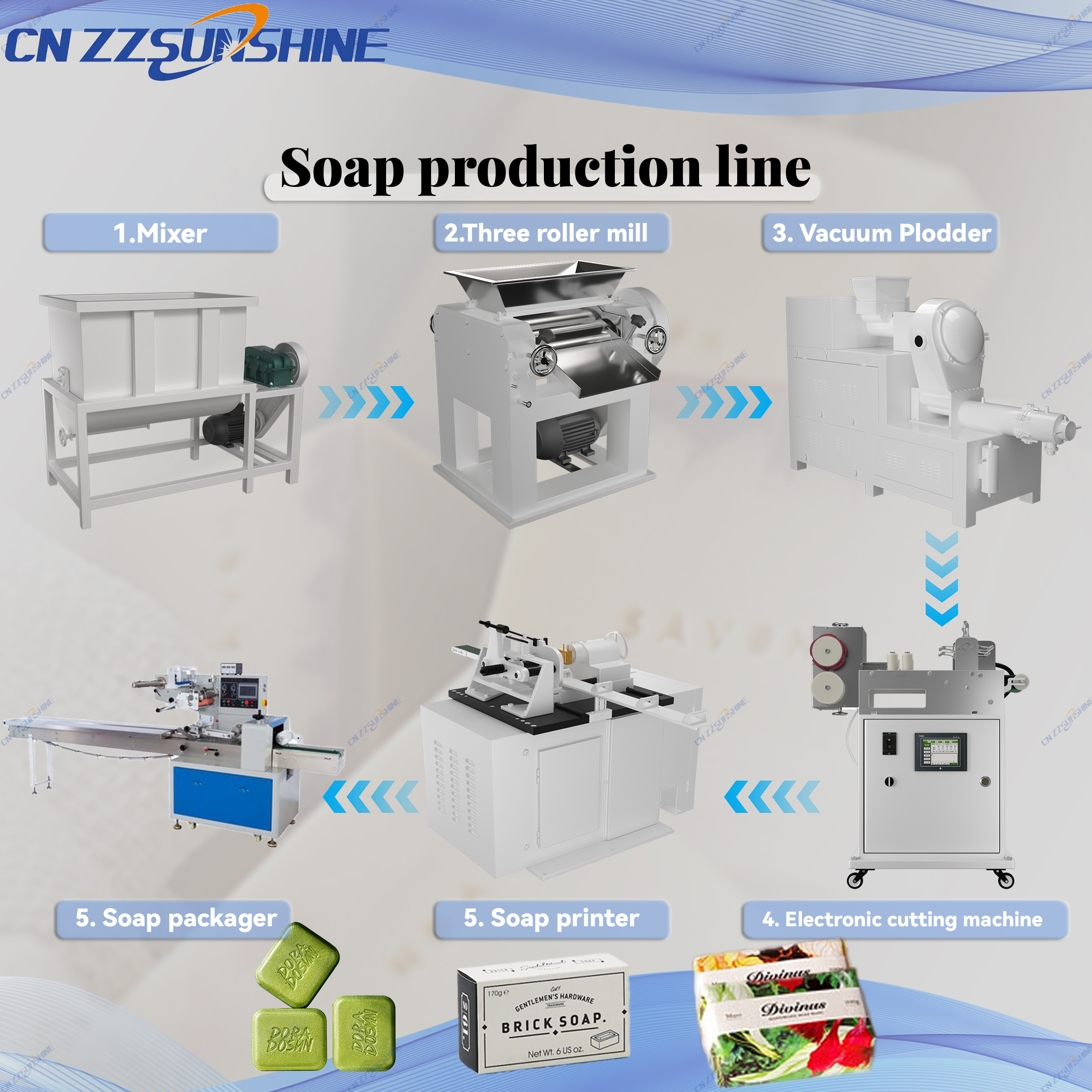Streamlining bar soap creation demands integrated, precision machinery. A modern automatic soap production line eliminates manual bottlenecks, ensuring consistent quality and high-volume output. The process begins with industrial mixers for chemical processing, where oils, fats, and caustics are homogenized under controlled conditions. This critical phase determines the soap base’s texture and saponification completeness.
The mixed soap mass then feeds into the core extrusion unit: the vacuum plodder machine. This specialized soap plodder compresses the mixture under vacuum, removing trapped air pockets that cause cracking or voids in the final bar. High-pressure plodding refines texture and density, crucial for both laundry bar soap production lines and premium toilet soap finishing lines. Output emerges as a continuous, uniform log.
Downstream, precision cutting is essential. An electric washing soap cutter ensures clean, dimensionally accurate slices with minimal waste. For unique shapes or sizes, a custom soap cutting machine provides flexibility. Advanced lines incorporate automatic block cutter machines before final stamping and cooling. The entire sequence – from soap mixer to vacuum plodder to cutter – operates seamlessly within a single automated soap making production line.
Key advantages include reduced labor dependency, strict hygiene control, and adaptability. Whether configured for robust laundry soap making lines or delicate beauty soap making lines, the integration of a high-efficiency vacuum plodder machine and responsive controls allows rapid product changeovers. Leading manufacturers offer OEM solutions, tailoring plodder pressure settings, cutter configurations, and line throughput to match specific capacity needs – from compact bath soap making machines to large-scale industrial operations. Investing in a cohesive automatic soap production line delivers tangible ROI through superior product uniformity, minimized waste, and scalable output.




